9 min read
The Best Rent Reporting Services of 2025
Like it or not, credit dictates a lot in our lives, and your tenants may want to get some recognition for their on-time...
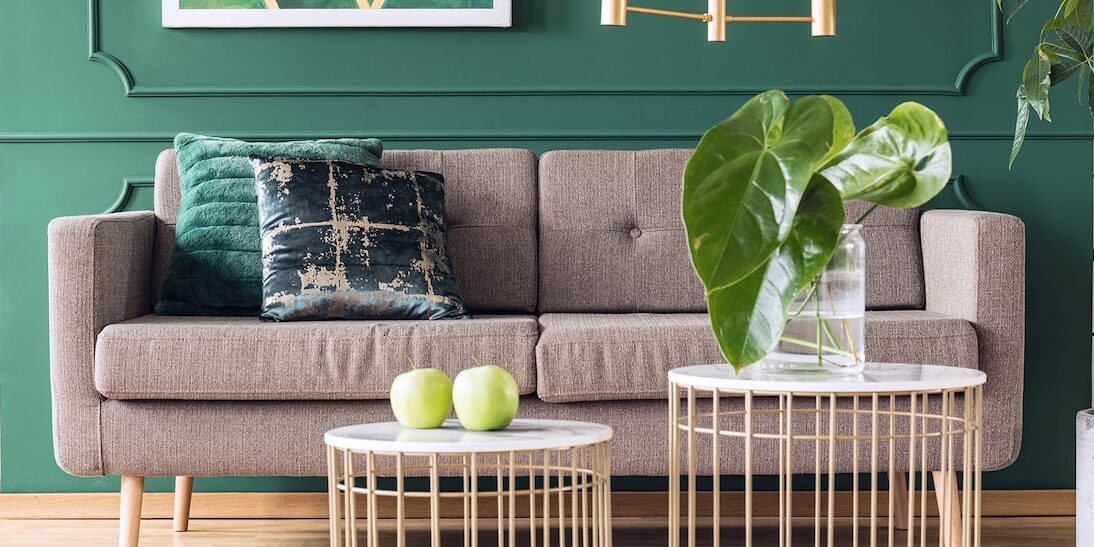
Since summertime is here, now is a great time to give your apartment an eco-friendly makeover. It may feel intimidating to make the switch all at once, but with this guide, we’ll show you simple changes and habits to adopt to help the planet.
If you’re a landlord, making these swaps can help attract eco-conscious renters. Plus, these swaps won’t break the bank! These are also great tips for tenants who want a more sustainable space. From switching out lightbulbs to adding more plants to your space, you can create an eco-friendly oasis with minimal effort.
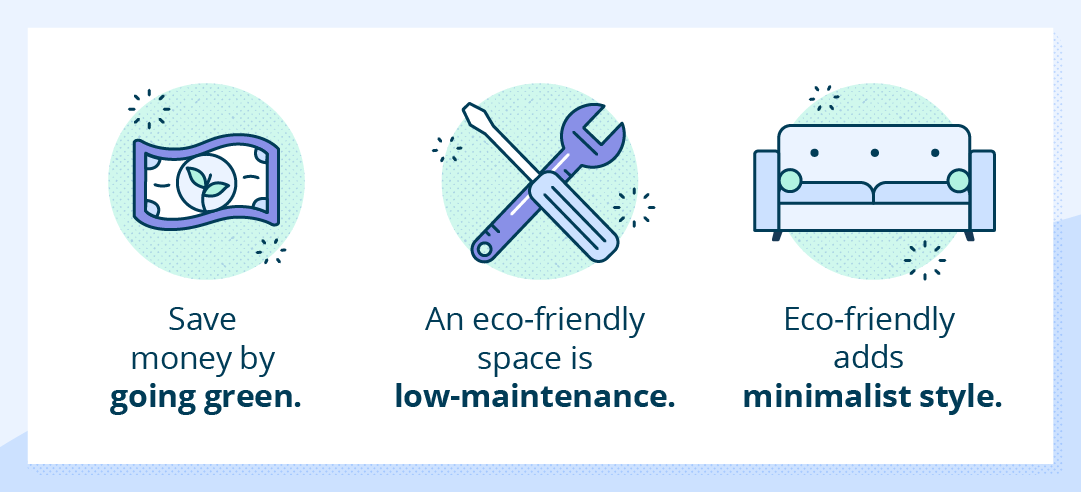
There are many benefits of adopting a greener lifestyle in your apartment, such as helping the planet, saving money, elevating style, and improving your overall health.
Here are the top three reasons to become more eco-friendly:
A lot of people believe that going green is expensive, but if you do it right, you can avoid making a dent in your budget. Save big bucks by recycling old materials in your home instead of taking them to a landfill. You can also buy local or second-hand furniture at a lower rate.
For a low-cost design, go back to the basics with more natural pieces and simple touches, such as plants. Open up those windows for some free fresh air and sunlight, and switch off unused electronics to save on your electricity bills.
Choosing natural materials and furniture for your apartment space will save you cleaning time, be more durable, and will be better for your health in the long run since many manufactured products contain chemicals such as VOCs. If you’re a landlord and want to update your space before renting it out, swap out your factory-made carpet for tile to save you from the allergies and chemicals that are being released into the air. Tile or other hard surfaces are a lot more mess-proof than carpet, so say goodbye to that vacuum!
Having an eco-friendly apartment can elevate the overall style of the space. Embrace minimalism by going for bare floors and more natural furniture, such as glass or other alternatives over traditional lacquered furniture. By going more natural and refraining from buying too many manufactured products, you can enjoy a clutter free space that is open and airy.
Do some good for the planet by making a few tweaks to your habits and lifestyle. Here are 11 of our favorite hacks to easily transform your apartment into an eco-friendly space.
Saving energy is a big step in reducing your overall carbon footprint. LED bulbs are better for the environment as they use 75 percent less energy than traditional lighting. Many tenants choose not to pick LED lights because of the blue light they emit, but now you can find yellow-based LED bulbs to achieve a cozier feel in your space.
Your power outlets could also be a contributor to high energy consumption. Even if everything is powered down, your devices will still suck up electricity while they’re plugged in, which is known as an idle load. This means that even in “sleep mode” your device is still considered fully on, just inactive. This “always on” energy provides no benefit to the consumer and costs $19 billion in electricity usage in America.
Idle load contributes to nearly 23 percent of household energy consumption. To become more energy-efficient, plug electronics into a power strip so you can easily turn everything off at once. You can also plug your devices into timers that will automatically shut off when not in use, helping you save on your electricity bills.
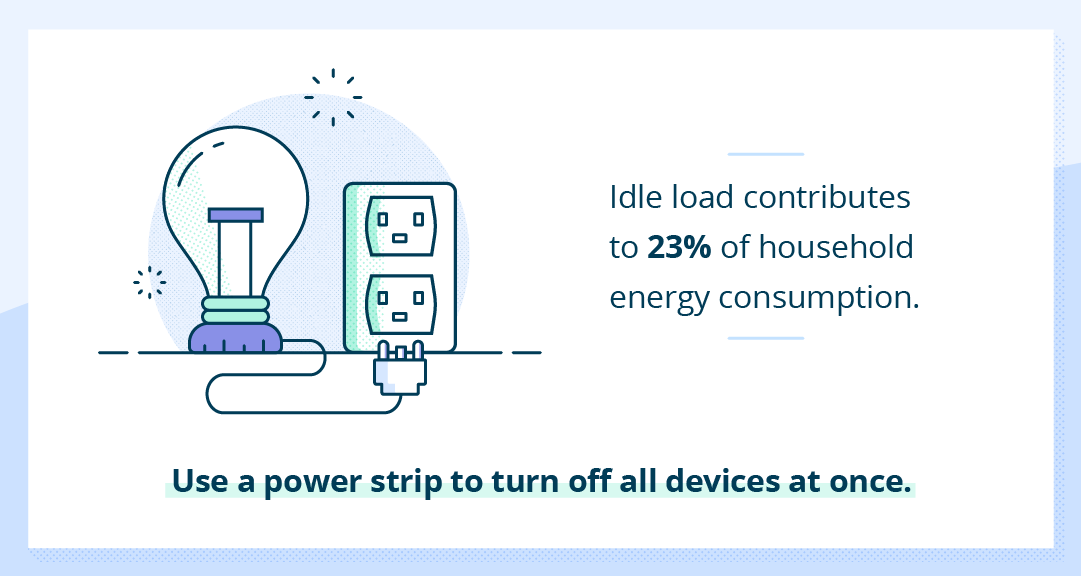
Volatile organic compounds, or VOCs, are found in many of the traditional paints we use on our walls and impact indoor air quality. These VOCs are harmful chemicals that can emit toxic fumes for years after the paint has dried. To step up your eco-friendly game and breathe healthier air, choose paints with a low VOC label the next time you want to change up your wall color.
You can even consider asking your future landlord if they can repaint the apartment with low VOC paint before you move in. Or, if you’re a landlord, updating your paint before renting out could help attract eco-conscious tenants to your property.
Incorporating greenery into your apartment is a fun and simple way to achieve an eco-friendly space and add to the style. According to a study from NASA, plants have air-purifying properties that help filter out and clean the air you breathe.
With these properties, plants may be a great alternative for purification systems, since these systems don’t reduce all levels of indoor air pollutants and can sometimes make the problem worse. Plus, changing out the filters on these filtration systems contributes to more waste.
Common houseplants that are great air-purifiers include snake plants, bamboo palms, aloe vera, and dragon trees.
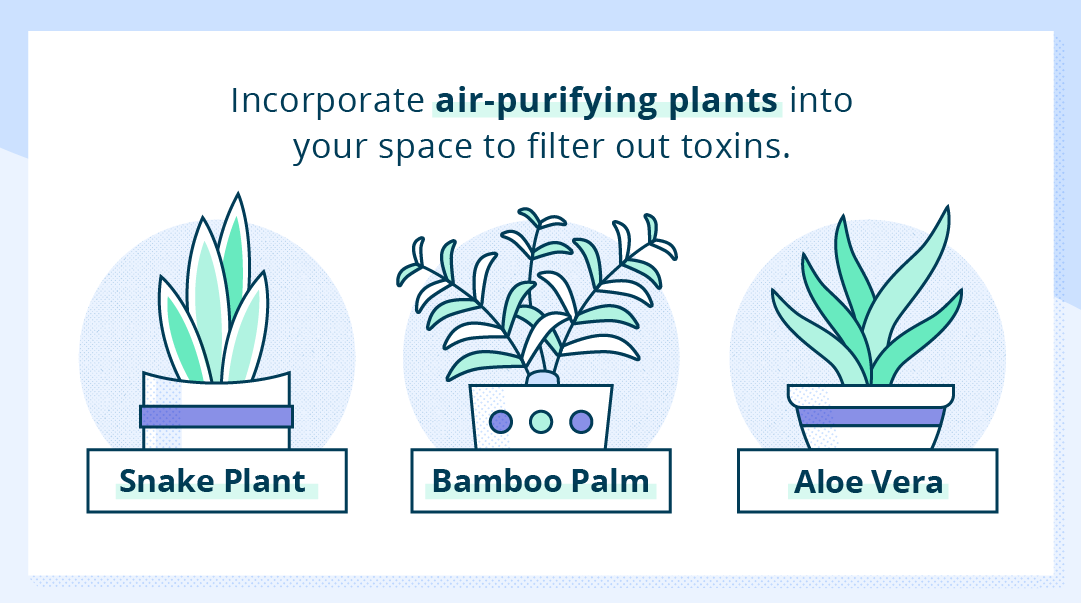
Become more eco-friendly by simply controlling the temperature of your space without electricity. Stay comfortable while also saving money on AC and heating bills!
During the summer, hang medium-colored curtains to block the heat of the sun. For the best insulation, get a thermal curtain that has triple-woven fabric, two layers or more, and blackout technology. Studies demonstrate that these medium-colored curtains with white plastic backings can reduce heat gains by 33%. If it gets too stuffy, open your windows to let in a breeze — this will also help circulate air that may be filled with toxins.
As it starts to cool off during the winter months, these same curtains can help insulate and block any cold drafts that could seep in through the windows.
Although recycling seems like an obvious tip, it may be time to become more conscious of how you’re separating recyclables.
There are some general rules to follow when recycling materials, like making sure your recycling materials are free of food and liquid materials and that the recyclables are not placed in bags. Since these rules might differ depending on your area, be sure to double-check your local regulations.
Here are some basic items that can and cannot be recycled:
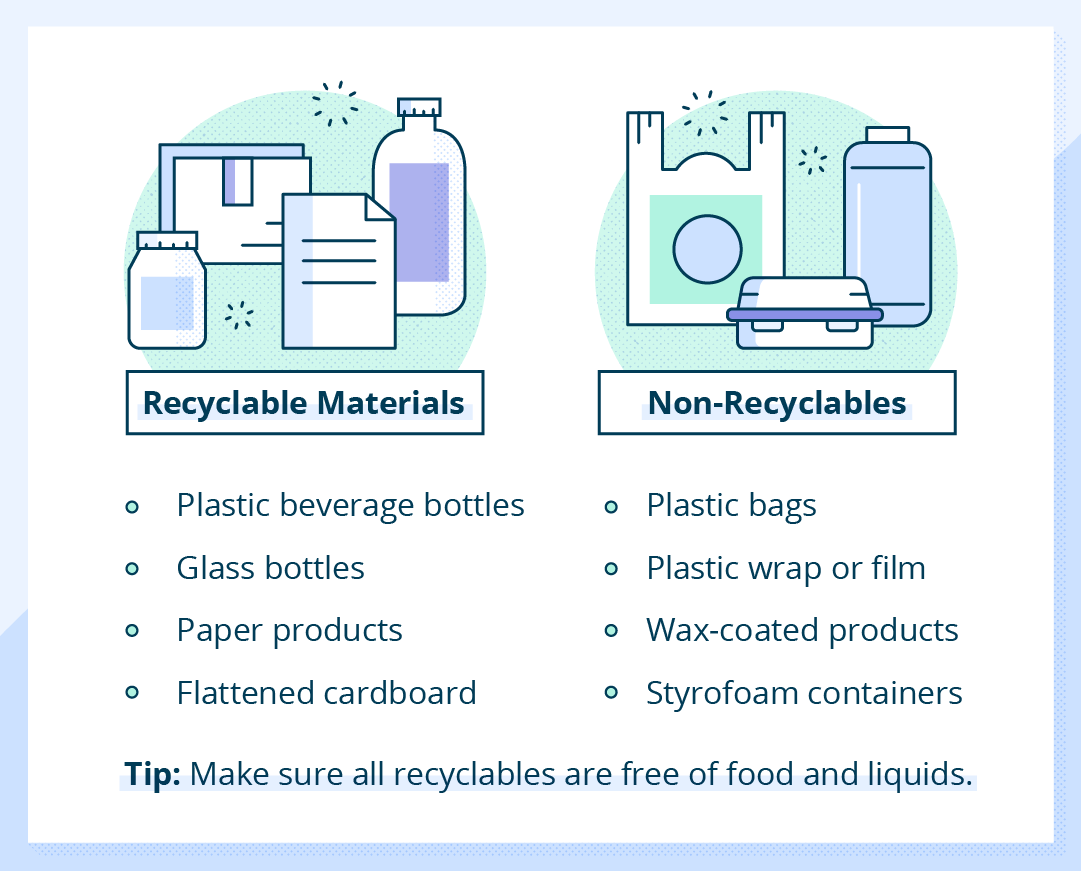
If you want to incorporate wood furniture into your space, check the label first. You’ll want to make sure that the piece is sustainably harvested, which is usually indicated with a label that says “FSC certified.”
Consider buying local to support artisans in your area and contribute to a smaller carbon footprint. Reclaimed wood, which is reused from previous construction, is another great way of choosing more sustainable furniture.
Wood preservatives found in furniture contain VOCs which are toxic to humans. To avoid this, shop for vintage wood pieces — since they’re older, many chemicals that it may have originally been made with would have dissipated by now. Plus, vintage pieces are totally unique and can add some flair to your space.
Checking the tags of textiles you want to add into your space — such as rugs, throw blankets, or dish towels — is important to ensure they’re not made of synthetic materials. Look for use of all-natural dyes, organic fabric, or recycled polyester. If it’s wool fabric, make sure it comes from humanely treated animals by checking the product label or company background.
Consider switching out your dish and bath towels for ones that are made from recycled materials or organic cotton. According to the Organic Consumer Association, organic cotton is free of harmful pesticides and also takes 71 percent less water to produce than conventional cotton. You can also use natural kitchen sponges made from hemp or coconut fibers instead of plastic.
Many laundry dryer sheets contribute to waste and have harmful side effects on your health. According to a study, exposure to fragrance in dryer sheets can cause irritation of the eyes and airways, contact dermatitis, migraines, and asthmatic reactions. The next time you do laundry, think about switching to fragrance-free dryer sheets or omit them altogether.
A great way to become more eco-friendly is by switching out your cleaning supplies. A simple habit to adopt is to swap out your harsh chemical cleaners for more natural alternatives. Natural cleaners can do the job just as well and can be a cheap DIY project.
Here are some common cleaners that you can make with natural ingredients found in your pantry:
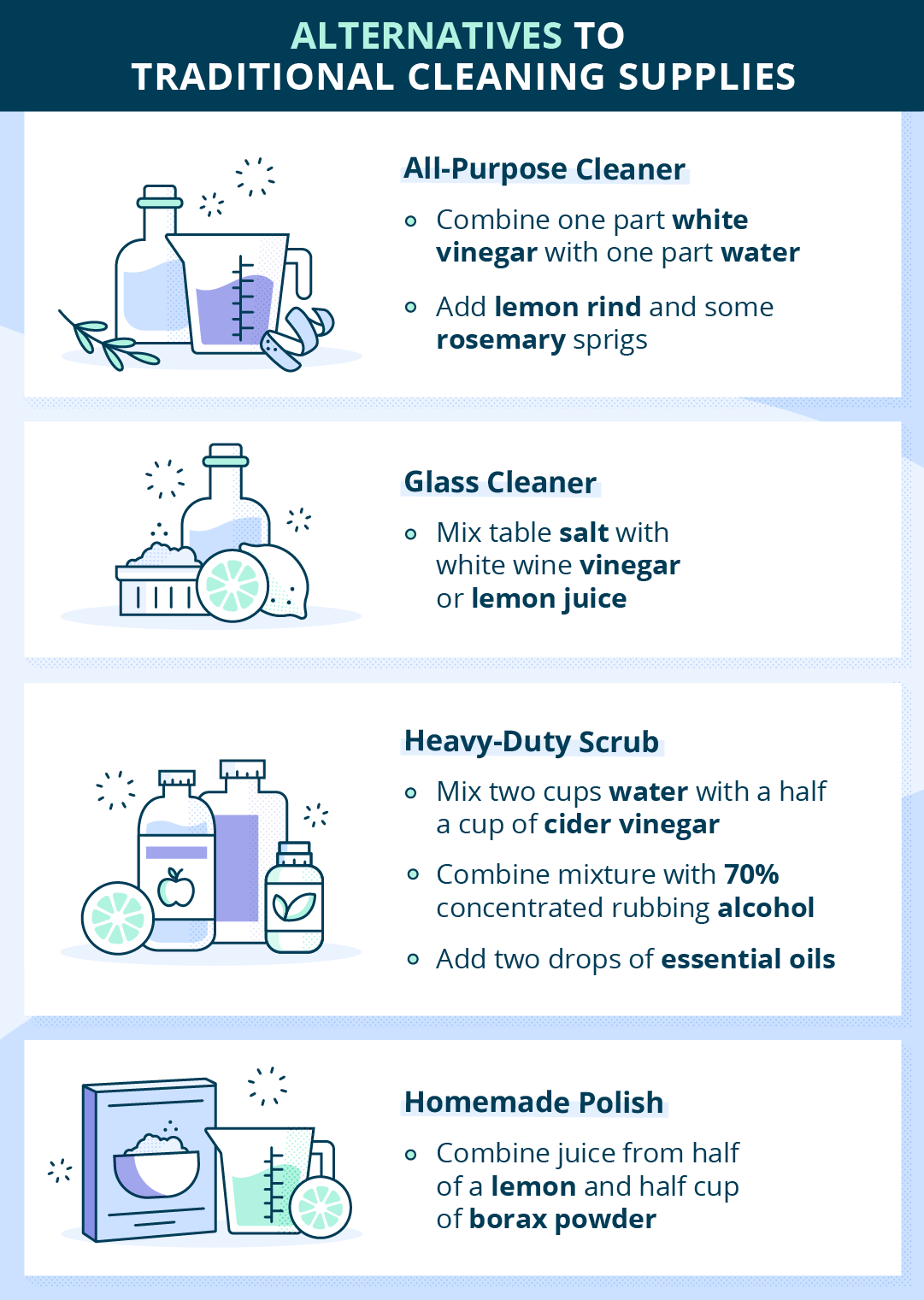
There are plenty of alternative materials available to use in your apartment other than wood, which is responsible for large amounts of deforestation of the rainforests. Glass and stone are popular eco-friendly materials and have very durable surfaces. Other household items, such as vinyl shower curtains, are bad for the environment, so consider swapping it out for an eco-friendly one made of PEVA, a non-vinyl, non-chlorine-based plastic.
If you like to decorate with candles, be sure to opt for ones made of soy, beeswax, or vegetables. Traditionally, cheaper candle wax is made of petroleum which can release toxic and hazardous chemicals into the air. Or, skip the flame and add fragrance to your space with essential oils or a wax melt.
Household products like paper towels and toilet paper create a lot of waste and are hard on the environment. To reduce the impact of paper waste, swap out paper towel rolls for cloth towels. These can be just as absorbent and are reusable.
Toilet paper is another form of large amounts of waste. Cut out toilet paper completely and install a bidet attachment. These attachments are much cheaper than the entire bidet fixture and are easy to set up.
If you prefer not to go the bidet route, choose toilet paper brands that are non-toxic, free of dyes, and are made from recycled paper.
Hot summer months could very easily lead to increased water usage around your apartment. The average American uses around 88 gallons of water a day at home, so it might be time to rethink those long showers. Aim to conserve more water and save on water bills by taking fewer showers, or purchase a water-saving showerhead.
Other areas of the house where you may use too much water include the laundry room. Consider doing laundry less often, or switch to a high-efficiency washer. These use almost half of the water that traditional washers use.
If you want to adopt these eco-friendly ideas into your living space but are not sure where to start, check out this visual that breaks down changes you can make!
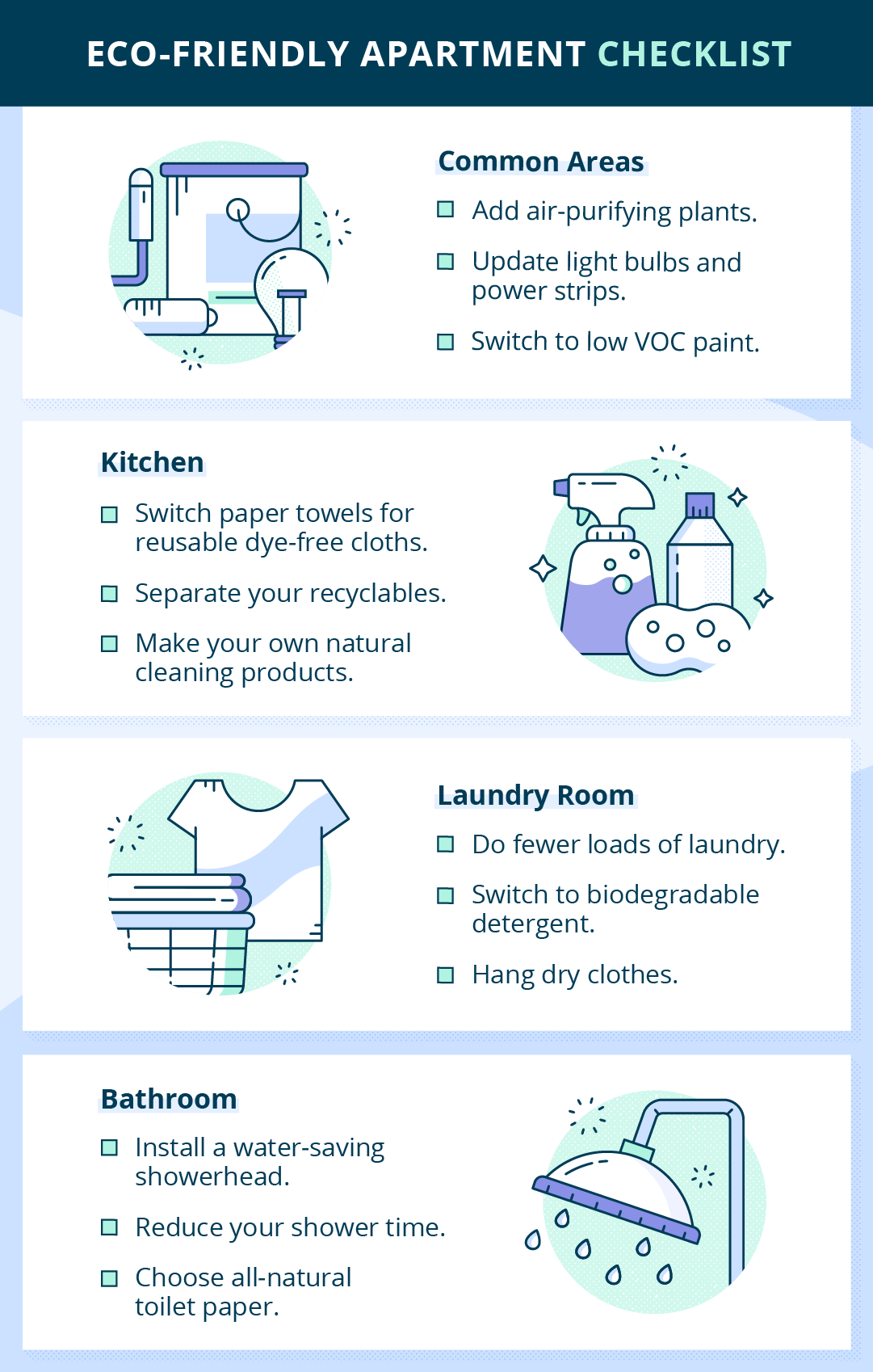
Whether you’re a tenant looking for ways to make your home more eco-friendly or a landlord trying to appeal to environmentally conscious renters, these eco-friendly apartment hacks will help you create the perfect sustainable and stylish space.
If you’re a landlord looking to fill an apartment, visit our rental application and tenant screening services to help find the perfect tenants.
9 min read
Like it or not, credit dictates a lot in our lives, and your tenants may want to get some recognition for their on-time...
14 min read
Staying compliant with IRS rules for rental property is a non-negotiable piece of the landlord puzzle. As we all know, Uncle Sam expects full transparency from...
10 min read
If you’re a new real estate investor, you might ask yourself, “Can the IRS find out about my rental income?” The answer...
Join the 750,000+ independent landlords who rely on TurboTenant to create welcoming rental experiences.
No tricks or trials to worry about. So what’s the harm? Try it today!
TurboTenant, Inc., © 2025
Created in Sunny Colorado